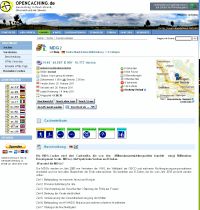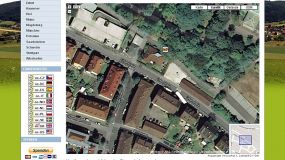Geocaching on MDG lifestyle
or
How to address Young Modern Performers outdoors?
Topping
5th step - Hiding the caches
For hiding the caches, we chose daytimes less frequent to regular visitors, so that no passersby can observe where the geocaches are hidden. Therefore, the danger of accidental findings is minimized. When hiding the caches, we used a GPS device to get to know the exact coordinates of our chosen hiding place. The GPS device we used is a smartphone with GPS navigation software like this. For smartphones of different operating systems, such as Mac, Windows Phone, and Android, there are free programs available called 'GPS trackers'. If you do not have such devices, you can also use a removable car navigation device which can show you the coordinates. You can even use the OpenCaching maps of your city by pointing the cursor to the hiding place, and the coordinates will be displayed .
Coordinates can be in different systems depending on your GPS device. It can be in “degrees-minutes-seconds” or it can be in “decimal degrees”. For example, N 44° 48.055 E 009°18.7 and longitude 44.815278 latitude 9.301944 are the same spot in two different systems. Geocachers mostly use the degrees-minutes-seconds system. Therefore, you might need to convert coordinates depending on your GPS device. There are several free online tools for this conversion on the internet such as: http://www.fcc.gov/mb/audio/bickel/DDDMMSS-decimal.html.
Once we had the coordinates of the hiding spots noted, we then published them online.
6th step: Publishing the geocaches online
For putting the caches online, we used, for example, a geocaching platform called www.opencaching.de. This page is also available in many other European countries. OpenCaching is one of the two biggest platforms. The other platform is geocaching.com, but this platform allows no educational caches at all.
After creating an account on the platform, we put a short introduction and the coordinates of each cache on eight different pages of the platform. Each page referred to one cache and its MDG. On the pages there was a short introduction to the cache idea and some short background information on each MDG. The cache could be located on a map as well.
Example MDG 2
 In addition, we added a teaser on our web and Facebook pages.
In addition, we added a teaser on our web and Facebook pages.
In our case, the eight geocaches were placed in the nearby city of Esslingen. We chose locations that are frequently visited by YMPs. These were the technical university of Esslingen, sports locations where YMPs go for a run, and locations close to shops that YMPs visit. The idea was to get to the places that YMPsl go to regularly. This is because many YMPs involved in geocaching are playing it along their usual daily routine, on lunch breaks from work, while going shopping, or while doing sports.
Feedback
As a tradition, geocachers will log their findings in the logbook, as well as on the internet. This way, feedback is directly a part of the game, and we could easily gather responses from our target group. The target group responded very well to the caches, and many of them wrote that they found the topic very interesting and got some new ideas from that. Responses were, for instance: "the topic was damn interesting",“thank you for the cool item!", (condom MDG 6) and “looking forward to more caches like this”. For the following months we estimate around 50 logs a month, which will add up to around 500 people by the end of the year.

